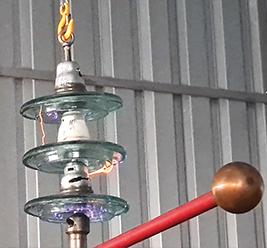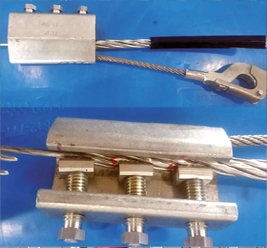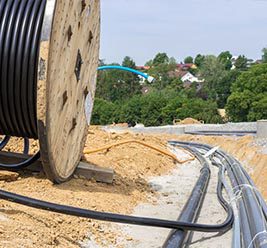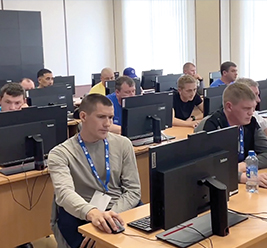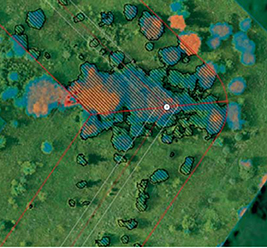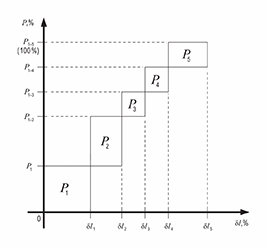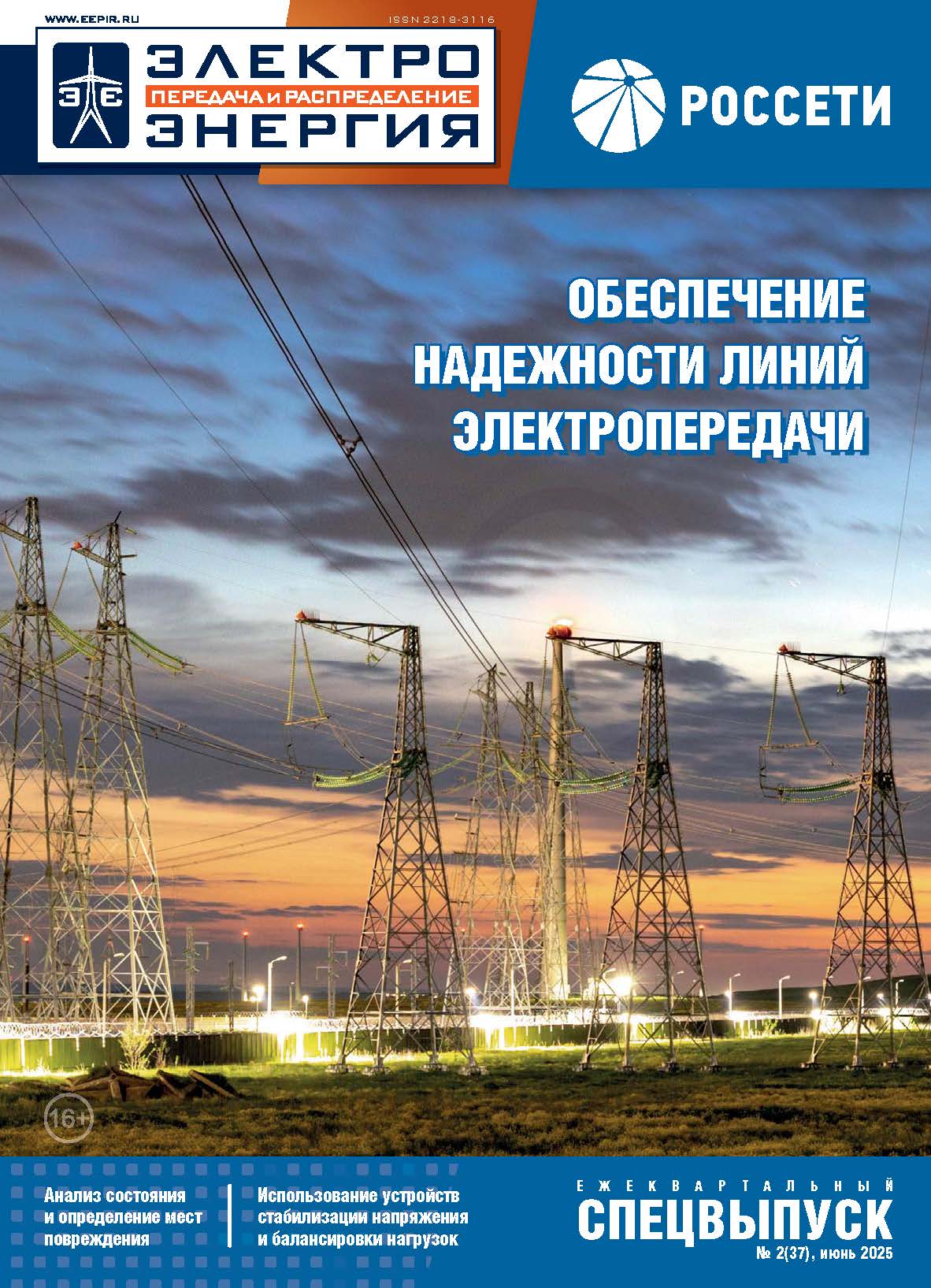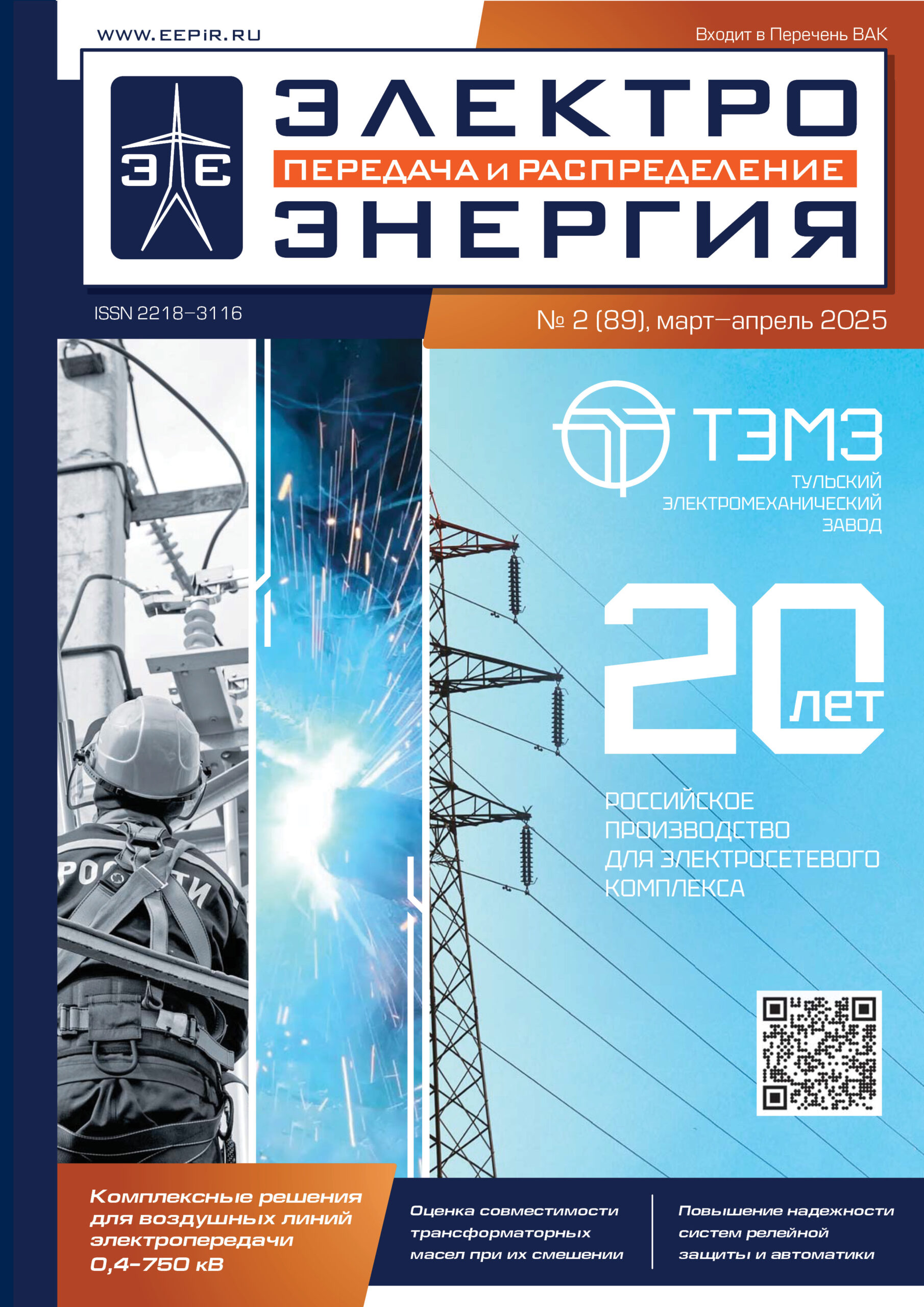
The MAIN JOURNAL for POWER GRID SPECIALISTS in RUSSIA

40
KOMORSAN – Remote Digital
Monitoring System for Overhead
and Underground Cable Networks
An aggregate data processing from the intelligent monitoring system sensors, which is based
on heuristic algorithms, brings an opportunity to manage problems before accident occurs.
The integrated systems of overhead lines and underground power cables outage monitoring
and management provide a simple solution in terms of the power system reliability enhance-
ment and removing the problem of false operating and functional losses of separate diagnos-
tic devices. Implementing modern hardware-software systems that are using complex data
processing algorithms, deriving data from various diagnostic devices, is a vital component
of an effective decision-making.
T
oday the electric power industry is passing
through fundamental transformation from cen-
tralized to decentralized model. There is an
"energy transition" based on the concept of an
active consumer – a new energy subject, which, in addi-
tion to the traditional function of energy consumption from
external sources, also performs the function of energy
accu mulation and generation. Power supply becomes an
ecosystem of power generators and consumers, which
are freely integrating in general infrastructure and energy
exchange.
New technologies of
fl
exible network construction
and its intelligent management form new principles for
monitoring systems organization in order to provide the
required reliability and quality characteristics and to im-
plement economically optimal use of own capacities in
combination with the consumption of electricity from the
existing power system. Creation of an effective moni-
toring system for power transmission lines and power
facilities based only on hardware devices without using
software-analytical complexes, which employ determin-
istic and probabilistic approaches, is impossible.
MAIN FUNCTIONS
OF A MONITORING SYSTEM IN THE MODEL
"INTERNET OF ENERGY"
While building a network of "Internet of Energy" model
one of the most important moments becomes a control
of new subjects inclusion in energy system and obtain-
ing the information about needs and power capacity
supply. It is necessary to control the process real-time
of electrical capacity income to the system, where three
main points can be highlighted:
1) network sections reliability evaluation;
2) lines transmission capacity dynamic determination;
3) accurate measurement of amplitudes and voltage
phases in the line for the energizing lines phase syn-
chronization.
Renewable energy sources, which have stochastic
nature of generation, while connecting to the system, can
disrupt the optimality of active and reactive power
fl
ows.
This causes overloading of particular network sections
and power losses increase. Small generation sources
are low inertia sources, that why they have small mar-
gin of transient stability during abrupt mode change, for
example, in case of short circuit on a line. In case of
connection a large volume of generation to a network
using renewable energy sources, voltage
fl
uctuation and
higher-order harmonics generation in the system are
ampli
fi
ed. The cases of load shedding necessity at the
moment of emerging disturbances appearance using
particular switched on generating equipment, as well as
capacity balancing while energy system operation, be-
come frequent because of the dif
fi
culties in RES power
output prediction.
In order to solve above mentioned problems of dis-
tributed generation and to identify potentially dangerous
energy system section it is necessary to evaluate in real-
time conditions the system reliability and timely imple-
ment front-rank technologies. Network The KOMORSAN
monitoring system provides predictive capabilities and
the functionality of the optimal energy transmission path
determination. Implementation of modern hardware-
software systems that are using complex data process-
ing algorithms, deriving data from various diagnostic de-
vices, allows you to meet all power system monitoring
tasks. At the same time, such a complex should be able
to process data using probabilistic methods for false
data detection, provide predictive diagnostics and apply
mechanisms of machine intelligence.
DIAGNOSTIC DEVICES AS A PART
OF A MONITORING SYSTEM
Undoubtedly, high-precision monitoring devices are one
of the main parts of a modern hardware-software moni-
toring complex that ef
fi
ciently operates in the power grid
"cellular" structure. Synchronized vector phase measure-
ments of currents and voltages in the network are required
for power exchange analysis. Data synchronization in
a single time scale allow you to operate with phasors in
Andrey KUCHERYAVENKOV,
Director of ANTRAKS R&D, LLC
Ekaterina KARTASHEVA,
Н
ead of marketing department ANTRAKS R&D, LLC
Elena KONDRASHENKO,
Director of Trinity Engineering, LLC
ANTRAKS R&D, LLC
+7 (495) 991-12-30,
www.antraks.ru,
of
fi
ce@a3.energy
DIAGNOSIS
AND MONITORING

41
order to analyze line state and technological electricity
losses, as well as to apply traveling wave method for ac-
curate localization of fault location. The dynamic capacity
factor control performed by intelligent sensors allows to
signal the malfunction in reactive power compensation
devices operation and is used for intelligent compensa-
tion devices adjustment, which is extremely important
for line operating modes optimizing and its transmission
capacitance increasing. Continuous monitoring of load
currents symmetry also allows to identify undesirable
modes of line operation and the trends of their develop-
ment. Fault indicators produced by ANTRAKS provide all
above-mentioned functionality.
Conductor slack sensors, sensors of frequency and
amplitude of wire swinging, vibration parameters sen-
sors allow to provide predictive diagnostics of overhead
lines mechanical damage for further repair. Wire icing
sensors make it possible to timely remove the ice from
a wire. Continuous monitoring performed by conductor
temperature sensors together with current measurement
provide evaluation of line load and its possible increasing
in particular line section, that is necessary for network
con
fi
guration optimization, retro
fi
tting planning, making
a right choice of con
fi
guration in an emergency case.
For real-time data synchronization from various de-
vices, reliable communication channels in the monitoring
complex are required. At the moment, several channels
are traditional for power equipment:
1) cellular networks GSM/3G/4G with low measure of
reliability in case of overload or in dif
fi
cult weather
conditions;
2) WiFi/WiMax coverage, as a rule, signi
fi
cantly territori-
ally limited;
3) communication using PLS and LoRa, which has
a speed limit.
A number of power equipment transfers data ac-
cording self-organizing network (Mesh) technology, with
data transfer from one device to another. The perma-
nent availability of three or more Mesh network nodes
for each diagnostic device installed on the power line
provides channel reservation. This allows to effectively
solve the task of load balancing. Data trans mission via
Mesh-RF, Mesh-PLC communication channels which
provide ease recon
fi
guration, high speed and reliability
is the best solution in terms of data transfer in moni-
toring system of the distribution network with "cellular"
structure.
PROGRAM-ANALYTICAL
FUNCTIONS OF KOMORSAN
MONITORING SYSTEM
Successful operation of the monitor-
ing system in a grid with a "cellular"
structure implies a simple integration
of data from various devices. For such
data integration ANTRAKS company
apply different types of communica-
tion modules. The network state ana-
lysis is based on the algorithm of real
measurements results and archive
events processing. The monitoring
system should be able to provide real
time processing a network structure,
which is a weighted graph, and take
into account possible negative values (in case of low level
of reliability) for the edges of this graph.
In order to provide stable and trouble-free monitoring
system operation, the algorithms of data processing must
solve the problem of false tripping or individual diagnos-
tic devices failure. Construction of graphical probabilistic
model based on Bayesian network makes it possible to
minimize false decision-making while fault location de-
tection.
The use of modern technologies of machine learning
and neural networks allows to make it by processing the
received information. And also is is possible to rank the
network sections for reliability and maximum ef
fi
ciency
for a consumer comparing it with the existing experience
of the network operating.
The monitoring system KOMORSAN, using standard
communication protocols, is able to interact with an expert
system that calculates the loads balance and con
fi
gures
the network, depending on the active user needs. Due to
special algorithms of current surges and transient process-
es analyzing, the monitoring system can form prognostic
precautions, detecting the power equipment damage be-
ginning and emergency situation probability increasing.
The monitoring system KOMORSAN is user-friendly
and includes a geographical information system that pro-
vides a graphical visualization of power facilities on a map
and the devices data output, along with their exact coor-
dinates. Geographical data storage is implemented in the
form of separate thematic layers with possibility of com-
bining them: geographical map, network mimic diagram
and power map. The storage of qualitative and quantita-
tive characteristics of facilities is realized as a database
with on-line data transmission. Addition of new devices
to the system, as well as full information from diagnostic
devices is available in a user-friendly form, according the
"plug and con
fi
g" ideology.
The monitoring system KOMORSAN is easily con
fi
g-
ured with possibility to assign users permissions and rights.
The monitoring system usage protects the power system
and provides its maximum ef
fi
ciency for the active user.
CONCLUSION
Such systems provide an opportunity of technological and
economical energy supply reliability and quality enhance-
ment, create new possibilities for consumers of choice of
necessary power supply conditions and are effective for
network integration and micro-grid management.
Р
KOMORSAN – digital monitoring system
47th CIGRE Session
Special issue, August 2018
Оригинал статьи: KOMORSAN – Remote Digital Monitoring System for Overhead and Underground Cable Networks
An aggregate data processing from the intelligent monitoring system sensors, which is based on heuristic algorithms, brings an opportunity to manage problems before accident occurs. The integrated systems of overhead lines and underground power cables outage monitoring and management provide a simple solution in terms of the power system reliability enhancement and removing the problem of false operating and functional losses of separate diagnostic devices. Implementing modern hardware-software systems that are using complex data processing algorithms, deriving data from various diagnostic devices, is a vital component of an effective decision-making.





